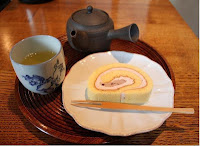The word of teapot is “kyusu” in Japanese. My mother used to make tea for us using kyusu when my growing up. Now, I make tea using kyusu. But, in general, this kyusu is like an endangered spices especially for younger generation. To them, tea means bottled-tea or teabag tea, not from teapot. They think using teapot is troublesome, even not having it at home.
This situation may have something to do with changing of our lifestyles to some extent. We used to have dinner with family and get together in the living room while chatting and watching TV. Then, mother would make tea using teapot. Nowadays, everyone is getting busier. Conversation is getting less. Family size is getting smaller. Even the word of “ocha-no-ma (tea space)”, which refers to living room, is obsolete.
I have to admit that bottled-tea or teabag is handier in a way, but I feel we are missing something. Something personal touch. It’s only kyusu, but it is kyusu, after all.
This situation may have something to do with changing of our lifestyles to some extent. We used to have dinner with family and get together in the living room while chatting and watching TV. Then, mother would make tea using teapot. Nowadays, everyone is getting busier. Conversation is getting less. Family size is getting smaller. Even the word of “ocha-no-ma (tea space)”, which refers to living room, is obsolete.
 |
| teatime -photo by T- |








